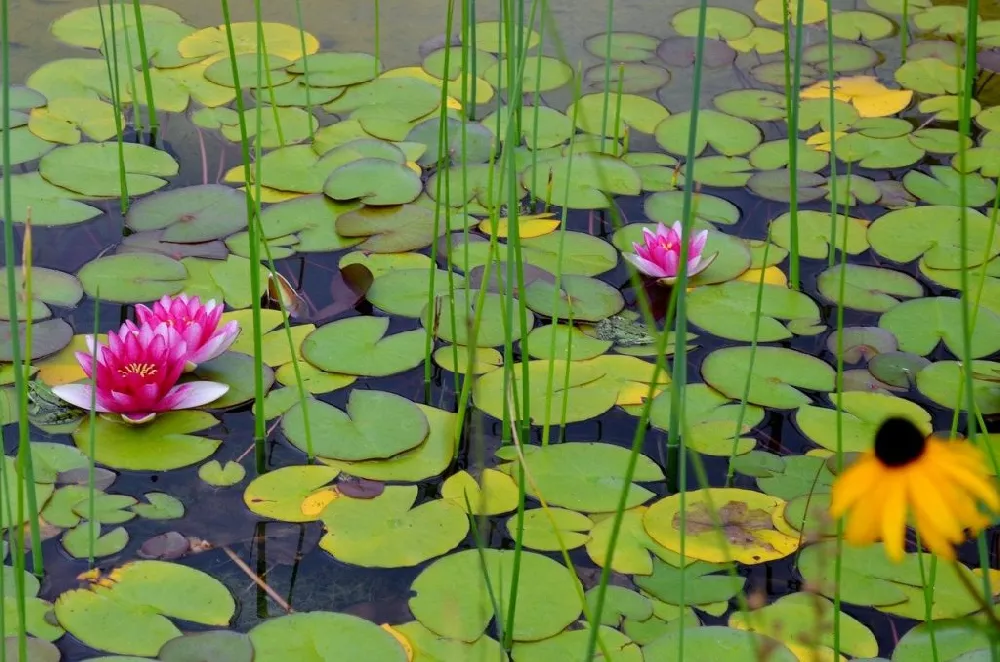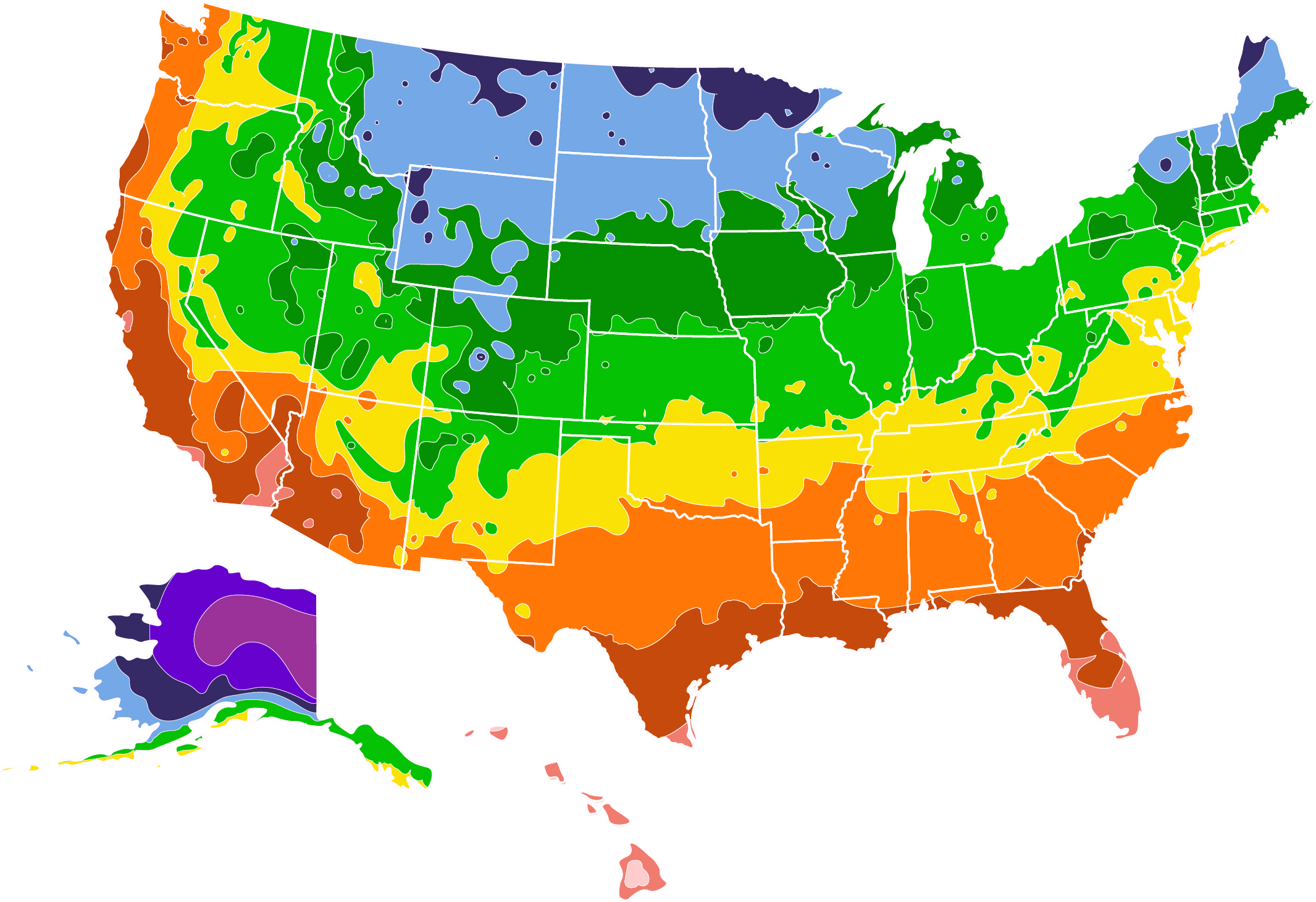- Home >
- Houseplants >
- Water Lilies
Water Lilies for Sale - Buying & Growing Guide
Pond Megastore - Black Princess Waterlily Medium Hardy Water Lily
Arizona Aquatic Gardens Changeable Andreana or Nymphaea ‘Andreana’ Winter Hardy Water Lily
Lilyblooms Aquatic Gardens - Albatros - White Hardy Water Lily
Enter your zip code to find nearby stores that may carry this plant.
Water lilies are among the most romantic and iconic blooms, bringing to mind European gardens and famous French works of art. Though many assume they’re difficult to grow and require extraordinary effort, the truth is that hardy water lilies are easy-to-grow perennials that can be planted in small ponds and backyard pools as well as indoor containers. They come back every year as long as they are given the proper care and small steps are taken to protect their roots from freezing. Here are some other reasons to love water lilies:
- They’re available in tropical and hardy varieties.
- Require at least four hours of sunlight a day, preferably more.
- Their flowers last three to four days, emerge from spring to fall, open in the morning, and close at sundown.
Planting and Care
Planting instructions
Though water lilies live in ponds and pools, they require soil for their roots. The bare-root plants sold by garden centers are best planted in wide, shallow containers. The wider and more shallow the container, the better it is, because it will accommodate the plant’s sprawling growth while also avoiding the problem of being top-heavy and easily overturned.
The plants do best in garden soil rather than potting soil, which will float away and cloud the water once submerged. Aquatic fertilizer pellets should be pushed into the soil and then the plants pressed into the soil with the tuber’s tips pointing upward. Once the roots are covered with soil, add a layer of gravel to hold the soil in.
Once the plant is potted, the container should be placed in the water, holding it at an angle until water bubbles stop appearing. The goal is to submerge the pot but allow the plant to lay above the water until it acclimates. The pot can eventually be lowered more, but the leaves should always float on the water.
Hardy water lilies will survive the winter’s cold temperatures as long as their soil line is below the freezing mark. If the plant’s watery home freezes solid in the winter the plant will need to be wintered elsewhere by lifting the entire pot out of the water and storing it in a plastic bag at a temperature of 40 to 50 degrees Fahrenheit. If the pool does not freeze solid, the plant’s container should be located in the deepest part where the water does not freeze, then returned to its normal spot once the weather and water are warm.
Tropical water lilies should be removed before the first frost, lifting the plant from its container and storing it in a plastic bag of damp sand stored at 50 to 55 degrees Fahrenheit.
Watering and nutrients
Water lily fertilization involves inserting aquatic plant fertilizer tablets into the soil that your plants are growing in. It should be provided once a month during the growing season but should not be added to the water, as that will impact any fish that you have and will also cloud the water.
Pruning
The blooms of a water lily last just a few days, and once their bloom has been exhausted they begin to sink. At this point, they should each be snipped off of their stem at its base in order to prevent seed pods from forming, as they drain energy from the plant and cloud the water. Beyond that small amount of deadheading, the only pruning required is the removal of dead or dying leaves. Water lily plants should cover approximately 65 percent of your water attraction’s surface.
Pests, diseases, and animals
Water Lilies are vulnerable to pests that can significantly complicate the health of your pond. Two different water-based bugs are the primary villains. Water lily aphids hide on the underside of the pads and on the stems, sucking the sap and causing yellowing, curling leaves, and killing flowers. Similarly, water lily beetles feed on flowers and lay eggs that yield larvae that strip tissue from the pads, leaving holes behind. The best way to handle both is to hose the leaves off, as an insecticide will cause more harm than good.
As for diseases, the water lily is at risk for crown rot that leaves pads yellow, soft, and slimy. The only way to deal with this problem is to cut away the infected area or plant before it impacts others that are nearby. The plants can also fall prey to leaf spots that can be recognized by red or rust-colored spots on the leaves. Affected leaves should be removed.
Light
Water lilies require a full sun position to thrive. Ensure your pond is not shaded from nearby trees or shrubs if you wish to grow water lilies successfully.
Temperature
Hardy water lilies are suitable for growing year-round in USDA hardiness zones 3 to 10. In these zones, they are perennial, so long as their roots are protected from freezing by being low enough under the water that they don’t get surrounded by ice.
If your pond does freeze during winter, lower the depth of your plant’s container to ensure its root system survives, bringing up back up to its usual depth in the spring. Tropical water lilies are more sensitive to low temperatures and can only be grown year-round in the warmest climates, typically upwards of zone 10.
Alternatively, in cooler climates with warm summers, you could consider growing tropical water lilies as annuals. To store your tropical water lily over winter, remove any dead or dying foliage and cut the plant back to its crown. Remove the plastic container from your pond, and cover it in a plastic bag. You could instead carefully lift the plant out of its soil, and place the rhizomes in a bag or container of damp sand.
Once your plant is fully protected, you should store it indoors at a temperature of around 55º F, ideally in a garage or basement where it will be cool but not cold. This will allow the plant to enter a period of dormancy. Come springtime, you can bring the plant back out and replant it in a plastic container and position it back in your pond (Better Homes and Gardens).
Propagation
Water lilies can be propagated in several ways. Water lilies that grow from rhizomes are most commonly propagated by division. This can be done every 3 or 4 years when the plant has outgrown its container and looks like it needs repotting. You can check if it is a good time to divide the plant by checking if it looks rootbound when lifting the container out of the water, or if the lilies are starting to protrude out of the water rather than laying flat on the surface.
To divide the plant, remove the water lily from its container and brush the soil away from the rhizomes. Use a sharp, clean knife to cut smaller rhizomes that have a small shoot attached away from the main crown of the plant. These rhizomes can then be firmly potted up in a plastic container of aquatic soil and set back into the pond.
Rhizomatous water lilies also have the ability to produce baby plants that are still attached to the parent leaf. If this happens, you can remove the plantlet and transplant it to its own container. If it is very immature, you may need to first set it in a shallow tray of water in a greenhouse or warm environment until it is ready to be potted up and put back into the pond.
Water lilies with tuberous roots can instead be propagated by bud cuttings. These types of lilies produce side shoots that can be carefully cut away from the plant’s roots. Each shoot can be potted up into its own shallow container of aquatic soil and set in a slightly larger container of water. Ideally, these new plants will be kept in a greenhouse, with a temperature of between 59 and 64° F. As the baby plants grow, you should keep increasing their water depth until they are big enough to be moved to a pond.
Water Lily Varieties
There are two types of water lily plants; hardy and tropical. Hardy water lilies are able to live through the winter in colder climates, so long as their roots are below the level at which the water freezes. They come in shades of white, pink yellow, orange, and red, and only come in varieties which bloom during the day. Tropical water lilies are suited to warmer climates, as they won’t survive winter in cold water. Tropical water lilies can be broken down further into two main types; day bloomers and night bloomers. These water lilies also tend to produce larger flowers than hardy water lilies, which often will stand on tall stems held high above the water. Their flowers also tend to be more fragrant than those of hardy lilies, and they have larger lily pads. They come in a wider variety of colors than hardy lilies, including shades of purple and blue. Varieties of water lily include the following.
Nymphaea gigantea
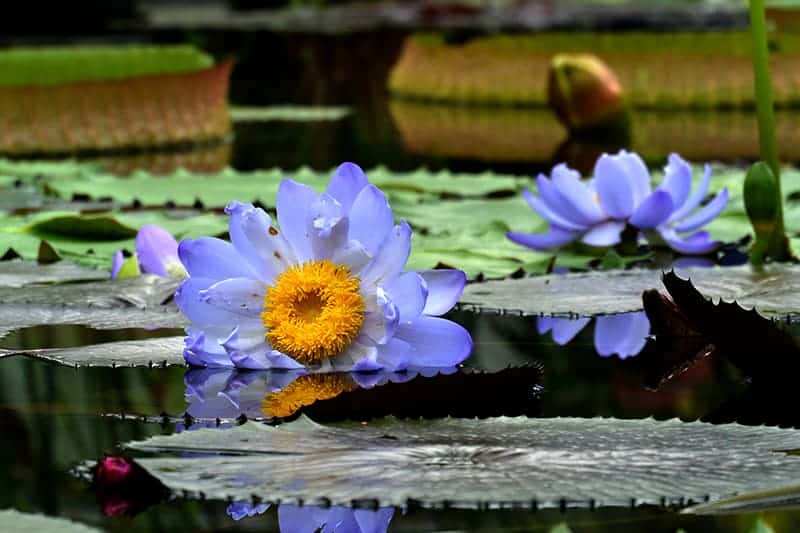
Nymphaea alba
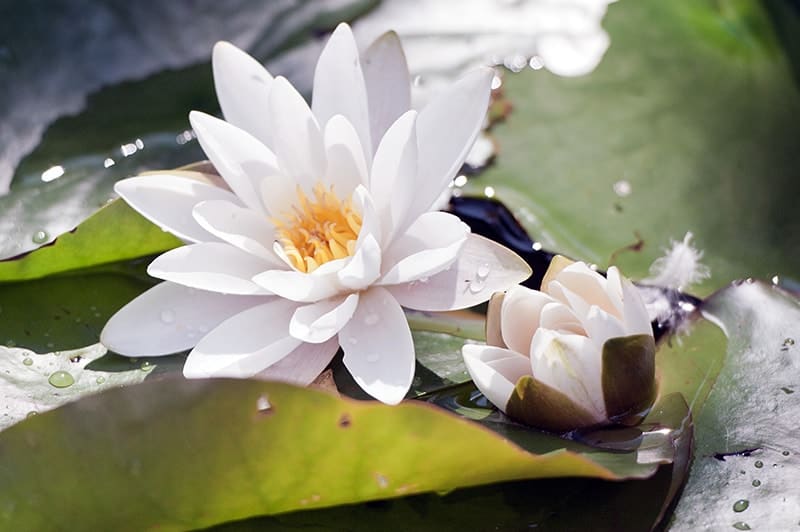
Nymphaea capensis
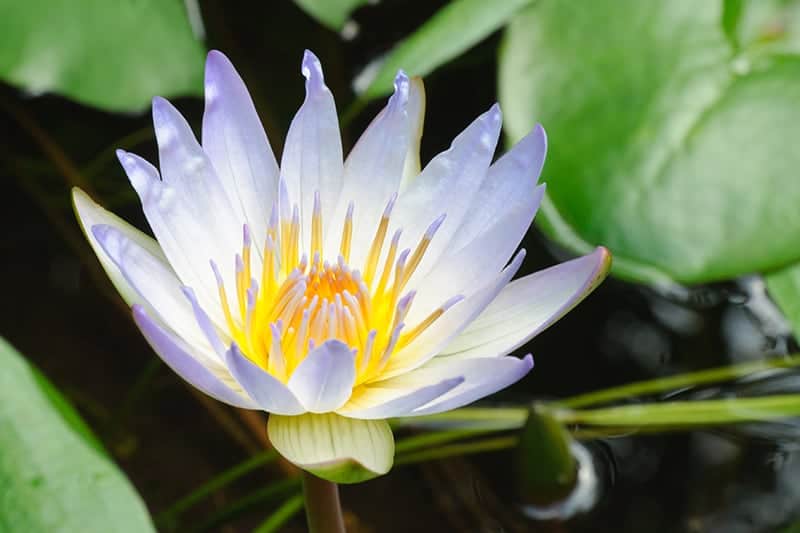
Nymphaea ‘Pygmaea Helvola’
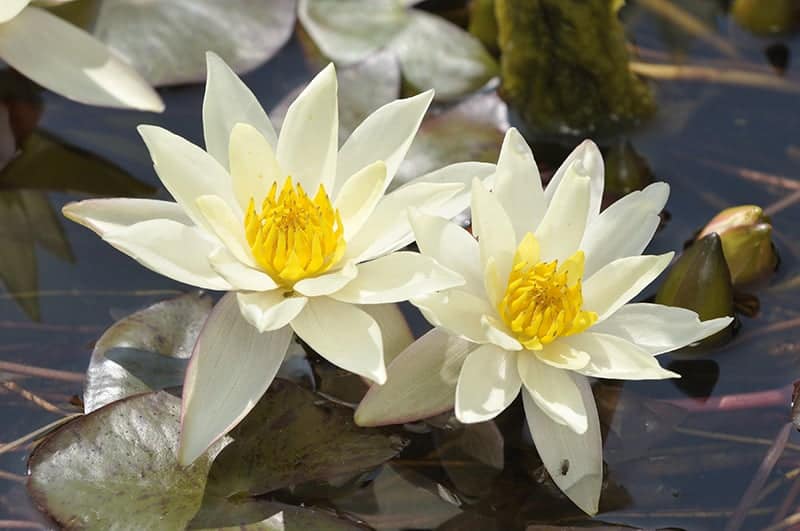
Nymphaea ‘Pygmaea Rubra’
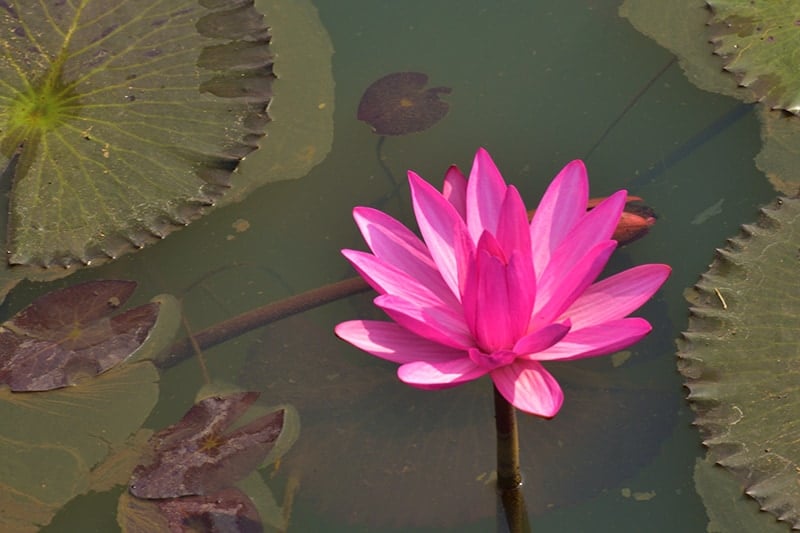
Nymphaea candida
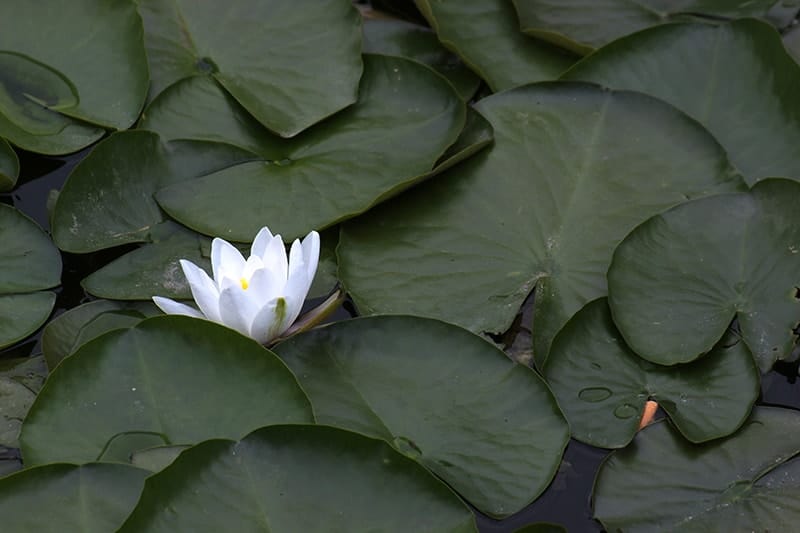
FAQs
Which fish do best with water lilies?
Though koi are popular and young fish will do well with water lilies, the bigger the fish grow the more likely they are to eat your plants. It is better to fill your habitat with smaller fish such as goldfish.
I want a water lily pond but am concerned about mosquitoes. How can I control them?
There is no doubt that having standing water in a water lily attraction will invite mosquitoes. If you keep goldfish in your pond they will eliminate mosquito larva, and if you are simply using the water as a display for your water lilies you should invest in biological controls known as mosquito dunks, which look like donuts. These get tied to the side of the pool and will keep mosquitoes at bay for a month. It is also important to remember that your water lily pond is likely to attract dragonflies, which eat mosquitoes.
Does a water lily pond require movement?
While fish often require water movement to remain healthy, that is not a concern for water lilies, which like still water. If you have some kind of bubbler or water fall present in your water attraction, you should keep it at a distance from your flowers.
